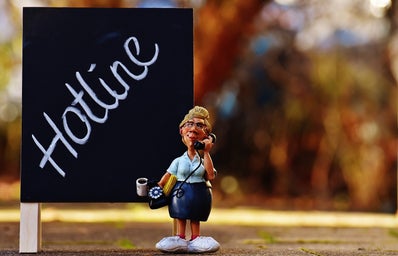Do you find yourself struggling to balance all of your after school activities? Are you feeling a little overwhelmed—a la Paris Geller from Gilmore Girls? If you’re having trouble fitting all your credentials on your resume or college application, you may be guilty of overloading your plate. Lucky for you, we’ve consulted with collegiettes and experts to help you narrow down your list and still show your best side!
Limit yourself
While it can be tempting to go over that one-page limit for a resume, it’s important to limit yourself. A college admissions counselor or potential employer should be able to glance over your resume in just a few seconds, so it’s crucial that you don’t overload it with information.
Set yourself a goal for how many activities you’ll include. You should generally stick to three or four positions, especially if you’re planning on going into more detail in your bullet points.
Katherine Burik, bestselling author and career coach at Interview Doctor, says your resume should tell a story. “If you have too much [on your resume], then the reader can’t figure out whether the experience is relevant to the problem that the hiring manager is trying to solve,” says Burik. “The reader becomes overwhelmed and moves on to the next resume that might be easier to read or tells a story that is more in line with the hiring manager’s needs.”
Tailor to the position
When you’ve participated in many activities, you have a lot of options as to what your resume can look like. This is a great advantage to have––it allows you to tailor your resume to each position you’re applying to!
For example, if you’re applying for an internship within your local government, you should showcase your most relevant extracurricular activities, such as student government, on your resume. On the other hand, if you’re applying for a job at a local newspaper, you might want to showcase your role in your school’s yearbook.
Burik says that her daughter participated in many clubs and activities during her time in high school. “When it came time to create her resume, we retained the activities and leadership roles that supported the kind of job she wanted,” she says. They kept the most important roles, like four years on debate team, service projects and leadership roles, but “left off some of the other miscellaneous activities that didn’t help, even though she enjoyed the experiences.”
Knowing the job you’re applying to will definitely help you narrow down your list of activities. Take a good look at the position description and key qualifications that the employer is looking for and compare them to the activities you’ve participated in.
Related: 6 Unique Extracurriculars That Will Make You Stand Out On College Apps
Consider the date of participation
It’s not only important to consider what you participated in, but also to consider when you participated. The dates of your involvement should be stated on your resume for each extracurricular you list.
While most of the activities you participated in throughout high school are relevant, it’s important to pay attention to when you were involved in them. For example, an extracurricular you’ve been involved with for the past three years will stand out more than an extracurricular you participated in for a semester during your freshman year.
While time logged in an activity is certainly something to be considered, sometimes it can be outweighed by other factors. Even if you only participated in student council for a year, the position is extremely relevant, so it might take priority over another activity you spent more time doing. You have to use your judgment to decide on the activities that are the most important.
Consider your role
Equally as important as the organization itself is your role in the organization. Potential employers and college admissions counselors are not only looking at what kinds of activities you participated in, but how you participated. For example, the title of “President” will often hold a lot more value than the title of “member,” especially if there are many other members.
“Leadership roles [on a resume] show me that the student can work well with others and is respected by colleagues,” says Burik. “This person might be easy to work with and have an opinion. If the person had a gazillion activities, I might wonder if he or she would have time for me.”
If you’ve held any leadership positions in your extracurricular activities, consider adding these to your resume. If you were captain of a sports team, vice president of the math team, or treasurer of student council, don’t be afraid to tack it on to your resume. A top position holds a lot of weight and shows that you can be a leader.
“It is not necessary to tell every single detail of your life [on your resume],” says Burik. “Highlight the items that tell your story and support your claim that you can do what you say you can do, which is what the hiring manager needs.”
While the process of putting all of your activities onto a piece of paper might seem overwhelming, it can be quite simple! Take advantage of your options and tailor your resume to the position you’re applying for. Be sure to keep in mind when and how you participated, and weigh these things against how important the organization might be. Once you’re done, you’ll have it narrowed down so it all fits on your resume!

